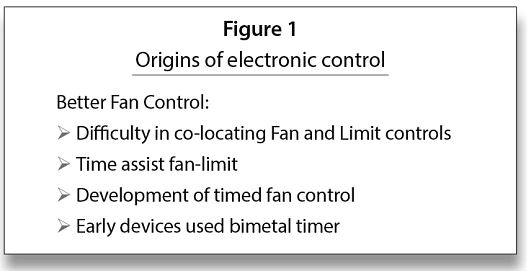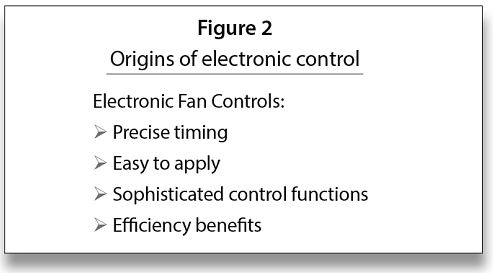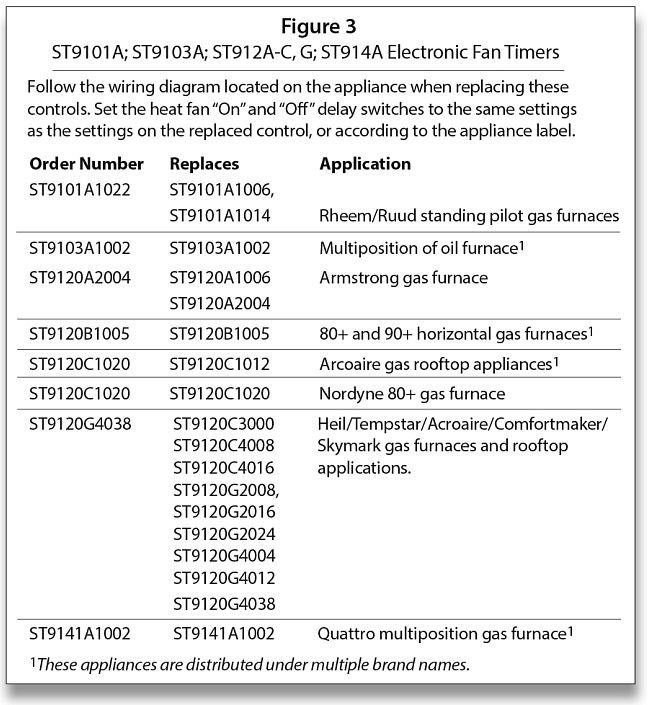Written on: December 11, 2023 by Timmie McElwain
As we look at modern systems and what specific problems they present, it’s important to understand the basic fundamentals associated with these systems.
Most of our modern heating equipment in some way or another involves electronics; along with the use of electronics is the use of flame rectification as a safety and flame-proving system. It doesn’t matter if it is a forced warm air furnace or a forced hot water boiler; the same basic system is used to perform safe ignition, and then consistent operation, throughout the entire call for heat.
There are, however, different ways it is applied—from intermittent pilot application to direct spark ignition and including hot surface ignition. Each system has its own distinct advantages and problems. Next in this series of resolving burner issues related to these systems, we offer corrections and diagnostics. It can be easy to jump to conclusions and change parts until you hopefully solve the problem. That is, however, time-consuming and costly.
I invite you to visit our Facebook page, Timmie’s Tips On Gas, I look forward to seeing you there.
We are starting a new series titled Advanced Controls for Gas Heating. In future columns, we will break down and examine individual controls, leading up to universal replacement controls—one control that replaces many others, making servicing these systems much easier, as well as simplifying truck stock.
Electronic Furnace & Boiler Controls
I have observed the gas industry since I began working in the 1960s until the present day and we have come a long way. Gas company technicians back then were using test lights instead of meters and there were no electronics to speak of. My background was in electronics in the Navy, and I owned my own multimeter and was quite capable of using it correctly to diagnose and troubleshoot the rather simple gas system circuits.
The slow addition of electronics into gas systems has surely taken off today. There are currently numerous systems, using rather sophisticated electronic controls, to operate many of the required functions. Almost everything in homes today uses some kind of microprocessor control. The mandates for efficiency have driven the plumbing, heating and HVAC industry into the electronic age. While we could probably still do some of the things we do with electromechanical controls, it would be with great difficulty. These functions are much easier with microprocessor-type controls.
Let’s discuss electronic controls used on furnaces and boilers. On the furnace side, we have Electronic Fan Timers and Integrated Furnace Controls. On the boiler side, we have multi-zone panels and (to be covered in a future column) Integrated Boiler Controls.

The traditional fan-limit control for warm air furnace:
• Has both functions combined into one device (L4064)
• Is difficult to apply in horizontal and counterflow furnaces, and especially in multipoise furnaces.
Ø Location for the fan control won’t work for the limit and vice versa
Ø Two separate controls cost too much
• Even though it perhaps has made controlling duct temperatures easier, due to its ability to be adjusted for ON–OFF temperature, it was just not adaptable to modern furnaces.
• Time assist fan-limit control (L4064T, E)
Ø Fan turns on after 90 seconds whether the sensor feels heat or not
Ø Limit control works as usual

Time-only fan control:
• The solution is to abandon temperature altogether as the basis for switching the fan and go to time only
• Bimetal timers have been available for a long time to do this job.
Ø S876 is still in the Honeywell product line and is a good solution to fan switching problems
Ø There are still Carrier/Bryant/Day Night Payne furnaces that use a bimetal control
Electronic fan control:
• The ability to design and build reliable electronic fan controls made a substantial change in the appearance of warm air furnaces:
Ø Electronic, and later digital, controls resulted in very precise fan-on and fan-off timing. We could have exactly the right timing for each furnace design. On delays and off delays could be specified exactly.
Ø Application became much easier because the issue of locating the fan sensor was completely gone.
Ø By switching the fan at exactly the right time, there are some small, but measurable, improvements in efficiency.
Ø Because of the increased efficiencies, the protection of the heat exchanger due to thermal stress was also a factor in precise timing, in particular the fan-on times.
Electronic Fan Timers
Electronic fan timers have been around for a while. The ST9101 is used on some standing pilot furnaces and the ST9103 is used on oil furnaces. The ST9103 integrates control of burner and circulating fan operation in an oil furnace. The ST9101A; ST9120A-C, G; and ST9141A integrate control of the combustion blower and circulating fan operation in warm air gas furnaces.
The use of twinning on warm air systems today is also addressed by twinning features on these controls. It is important to realize that these controls are configured for application to specific appliance models. They are intended for direct replacement of OEM installed controls only; as noted in Figure 3 below (do not attempt to apply these controls except as direct replacement for specific Honeywell models noted).

Later in this series, we will address the use of universal replacement controls on both the ST9120U-1003 and the newest version, the ST9120U-1011. As the systems grow older, the development of universal replacement controls makes the service techs’ job a lot easier.
Figure 3 shows the controls and the particular original equipment manufacturer (OEM) that used them. As we address universal replacement controls in future columns, you will see that many of these are replaceable by a universal application. ICM